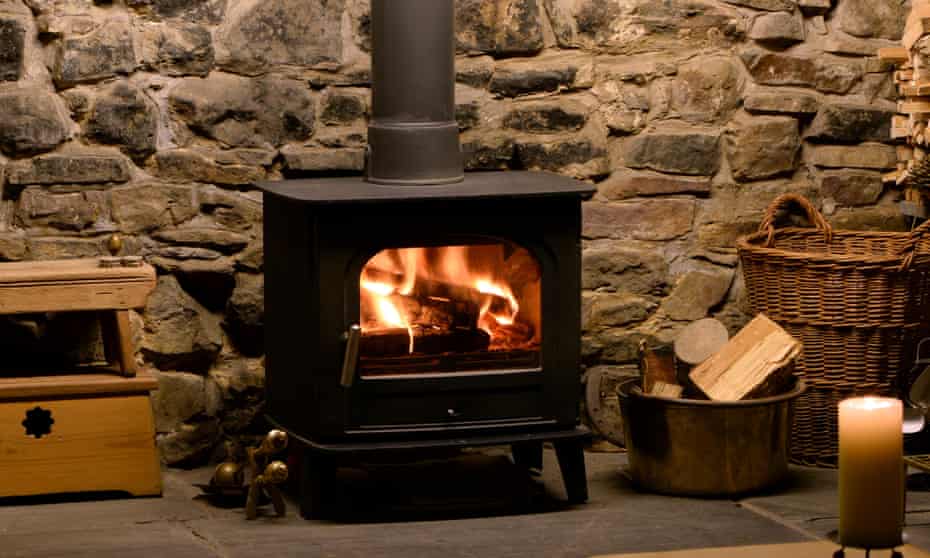Pollutionwatch: the solvable problem of home wood burners
Wood burning is causing dirty air from the UK to Australia, but a study shows incentives to switch can work

In 2010, air pollution scientists from three of Europe’s biggest cities – Paris, Berlin and London – sat down together. Our data showed a new and consistent pattern. Air pollution from wood burning had returned to our cities. Biomass energy schemes were subsidising new wood burners in schools and offices and wood was being burned in power stations, too, but the additional air pollution in our cities was coming from homes. We wrote a paper warning that biomass subsidies to reduce climate emissions may be leading to increased acceptability and popularity of home wood burning in stoves and fireplaces too.
By 2016, home wood burning was the second-largest source of particle pollution emitted in London. By 2018, it was responsible for nearly half the emissions across Europe.
Now an Australian study has calculated the health cost of home wood burning. It took place in Armidale, a city of about 25,000 people, midway between Sydney and Brisbane, known for its two cathedrals and elegant 19th-century buildings. Frosty nights are a feature of winter here and these are frequently polluted by the 40% of homes that use wood heaters. Researchers estimated that the air pollution from wood heating was responsible for up to 14 early deaths each year, an annual health cost of between A$5,000 and A$11,000 for each wood-burning home(about GBP3,000-6,000). A similar study in Tasmania valued the annual health harm at about A$4,200 for every wood-burning home.
The problem is solvable. Stopping burning wood works for health. An earlier programme in Launceston, Tasmania, incentivised homeowners to switch from wood heating. It reduced wintertime respiratory deaths by 28% and heart deaths by 20%.
Prof Fay Johnston at the University of Tasmania, who was involved in the Armidale and Launceston studies, said: “Wood heaters really punch above their weight when it comes to polluting the atmosphere. Any scheme that replaces wood heaters with less polluting forms of heating will pay for itself within a year and provide ongoing savings from the avoided additional disease and death associated with woodsmoke.”
On the eve of Cop26, research from Chatham House has provided more evidence that the UK’s subsidised large-scale burning of wood for energy, such as wood chips burned at Drax power station, results in more carbon dioxide in our air, not less, for decades to come. If the government and homeowners had spent the past 10 years investing in insulation and non-combustion renewables, instead of wood burning, we would have healthier air in our cities today and less carbon dioxide in our atmosphere.
